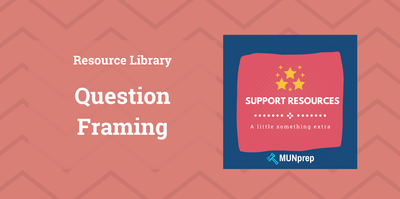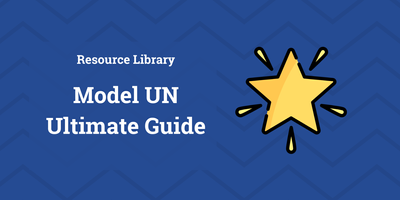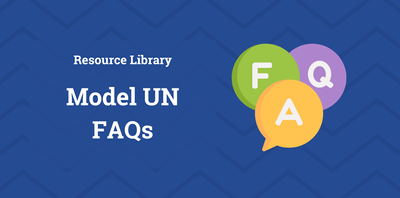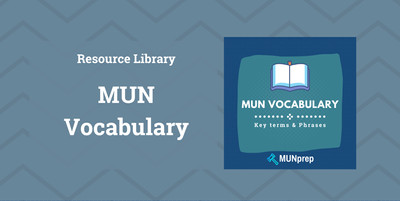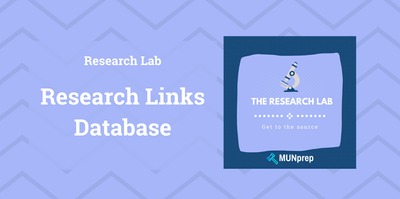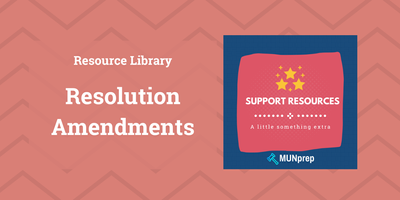Using Facts and Figures in MUN
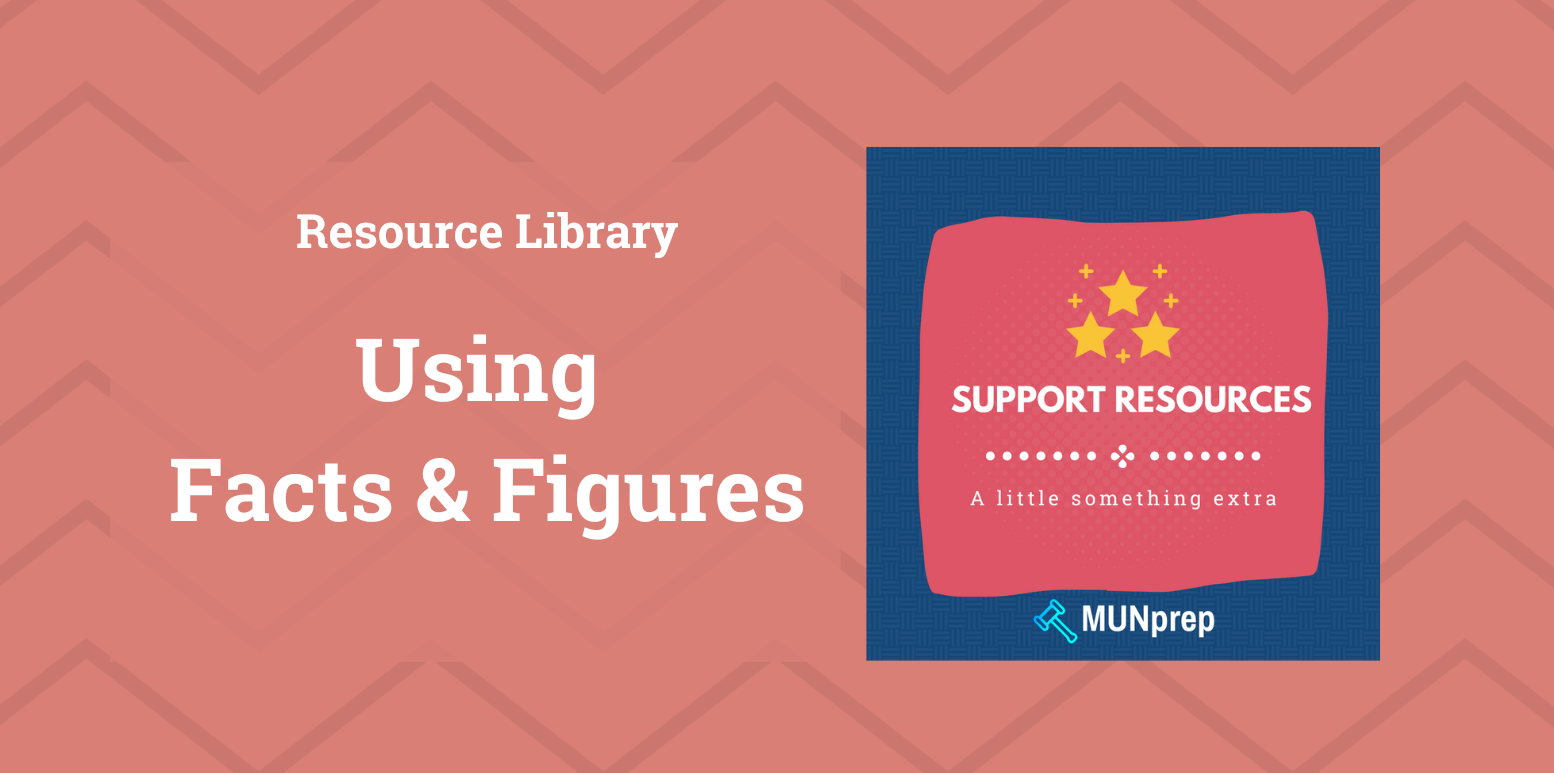
Facts and figures are powerful tools in Model UN. They enhance your credibility, strengthen your arguments, and demonstrate that your positions are grounded in evidence.
In this guide, you’ll learn how to incorporate statistics into your speeches, negotiations, and resolutions to make your delegation stand out.
When To Use Facts
1- Understand the Purpose of Facts and Figures
Facts generally have 3 main uses:
Support Your Argument
Statistics reinforce your stance by showing that your arguments aren’t simply opinions but are backed by research. When other delegates see you referencing credible data, they’re more likely to take your proposals seriously.
Example: "According to the World Bank, renewable energy accounted for 29% of global energy production in 2020, but to meet climate goals, this must increase to at least 60% by 2030."
Strengthen Persuasion
Well-chosen figures can sway undecided delegates. Numbers can carry a powerful emotional weight, making an issue’s severity or urgency more tangible.
Example: "Switching to solar energy can save households up to $500 annually in electricity costs, according to the International Renewable Energy Agency (IRENA)."
Highlight Urgency
Facts and figures help contextualize the scale and severity of an issue. By painting a clear picture of the problem, you can persuade others to prioritize solutions.
Example: Stating that “Every day that we delay action, brings us 2 days farther from achieving our climate goals”
2- Integrating Data into Speeches
Start with a Compelling Statistic
Delivering a speech with an eye-catching figure can hook the audience’s attention. For instance:
“According to the UN, over 780 million people lack access to clean drinking water.”
Explain the Context
Don’t just throw out numbers—interpret them. If you mention that 780 million people lack clean water, explain the implications, such as increased disease and higher mortality rates.
Example: "Over 780 million people lack access to clean drinking water, according to UNICEF. This lack of access contributes to widespread waterborne diseases, such as cholera and dysentery, which disproportionately affect children under five, leading to preventable deaths. Without action, these numbers will only rise due to climate change."
Link It to Your Position
Connect the statistic to your country’s perspective or solutions you’re proposing. This not only personalizes the data but also shows delegates why they should care.
Example: "Over 780 million people lack access to clean drinking water, a crisis that affects my country directly, where over 40% of the rural population relies on untreated water sources. This is why we propose an international fund to develop clean water infrastructure, prioritizing regions with the highest mortality rates due to unsafe water."
3- Unmoderated Caucuses
Facts and figures lend authority to your argument during an unmoderated caucus, often cutting through disagreements and uniting delegates around shared concerns.
Frame the Discussion
Start with a statistic that highlights the scale of the issue.
For example, "The UN reports that 70% of global waste is improperly managed. This shows why we need to prioritize waste management reform in developing countries."
Support Your Proposals
Use data to justify the practicality or urgency of your solutions.
For example, "A report by the World Bank shows that investing $1 in disaster preparedness saves $7 in disaster recovery. Our bloc's proposal for an early warning system makes both economic and practical sense."
Bridge Differences
Highlight statistics that resonate with multiple perspectives to build consensus.
For example, "Since 30% of arable land worldwide is degraded, addressing soil health is crucial for ensuring food security for all countries."
4- Resolutions
Use statistics to provide context and highlight the significance of the issue.
Example: "Recognizing that 60% of global greenhouse gas emissions come from the energy sector…"
For example, "Acknowledging that 1.1 billion people worldwide lack access to electricity, this resolution proposes a global fund to expand renewable energy projects in underserved regions."
Some Final Reminders
1- Researching Reliable Data
Use Credible Sources
Relying on reputable organizations and institutions ensures your data is accurate. Try sources such as:
- UN Databases and Reports: The United Nations provides official data on a multitude of global issues.
- NGO Publications: Reports from the World Health Organization (WHO), World Bank, and other reputable NGOs are often widely recognized in MUN debates.
- Government Websites: If you’re representing a specific country, look for national statistics on official government sites to support your stance.
Check out our research resources database here!
2- Citing Sources
Always Mention Your Sources
Credibility is crucial. Referencing a specific report or organization (e.g., “According to the UN Development Programme…”) shows you’ve done your homework.
Be Specific
Include the publication date or year of the data so delegates understand its timeframe. For example, saying “According to the WHO in 2022…” makes your facts feel more up-to-date.
3- Avoiding Overuse or Misuse
Strike a Balance
While facts and figures are crucial, don’t overwhelm your audience with a barrage of numbers. Blend them with anecdotes or real-life stories to maintain engagement.
Verify Accuracy
Using questionable or outdated data can quickly destroy your credibility. Double-check your statistics before presenting them, and avoid exaggerating figures to make your point.
Conclusion
When used correctly, facts and figures strengthen your MUN performance, showcasing thorough preparation and grounding your policy proposals in reality.
By weaving well-sourced, relevant, and recent data into your speeches, negotiations, and written documents, you’ll not only bolster your own credibility but also help drive the committee toward informed and impactful resolutions. Good luck at your next Model UN conference!

